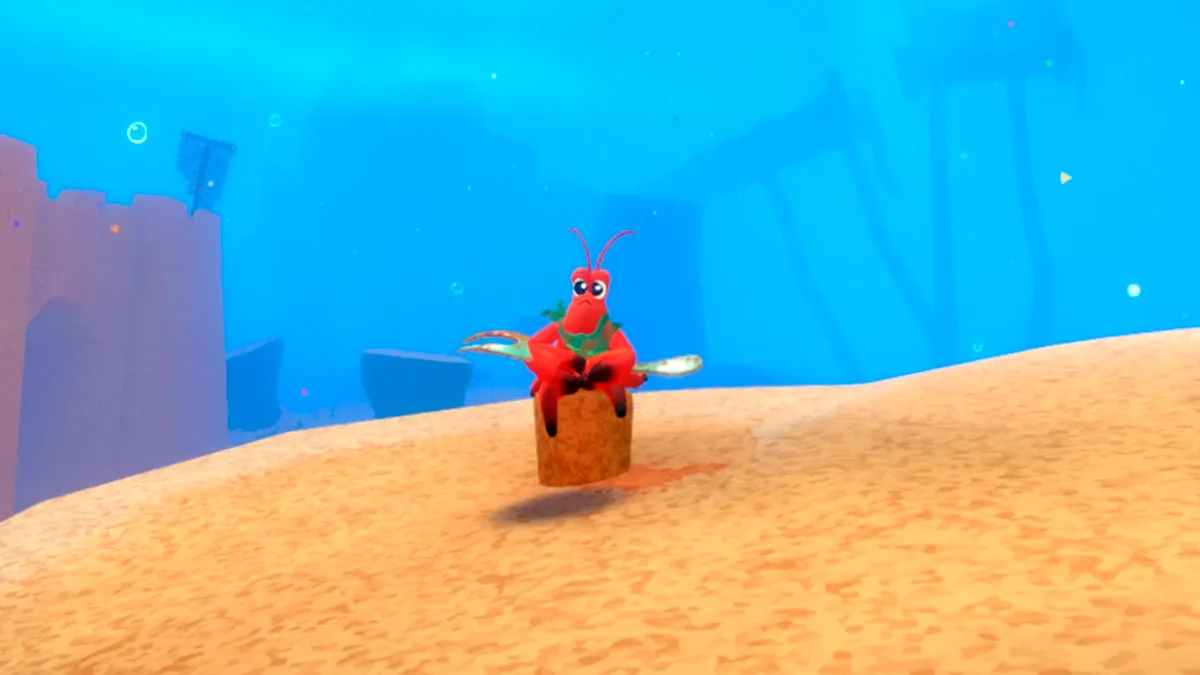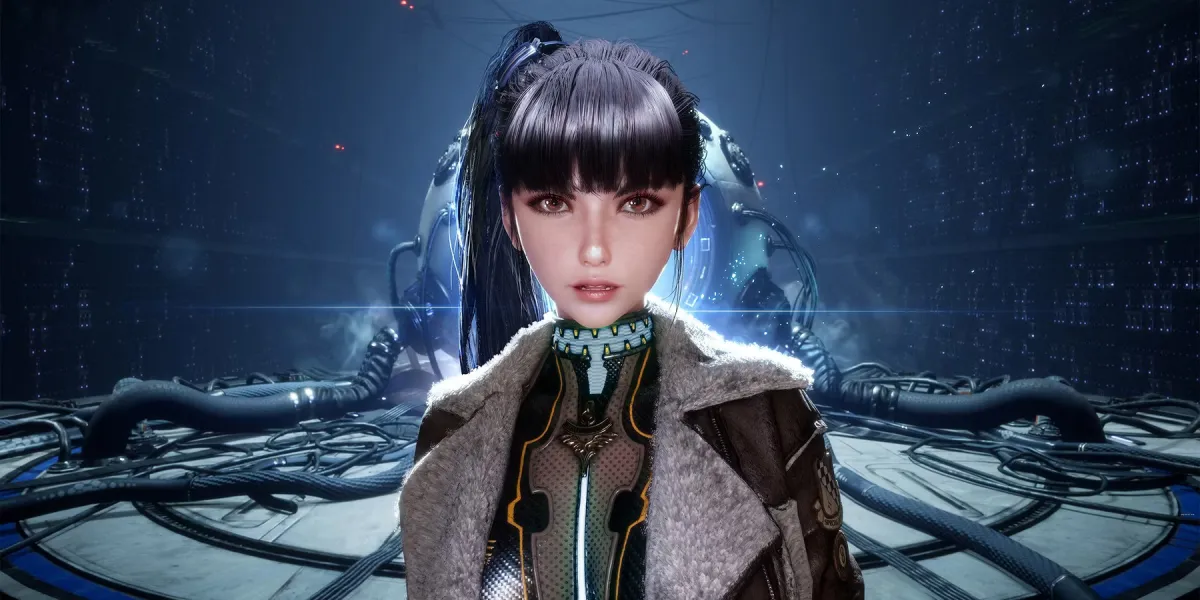 Next month The Escapist will be publishing one of our awesome and terrible company profile issues. These are usually great fun for us because they allow us to break the mold a bit and discuss the good things and bad things about some of our favorite game companies. Our issue on EA is probably the best example of these. We’ve also profiled Sega, Microsoft and Blizzard, to name a few.
Next month The Escapist will be publishing one of our awesome and terrible company profile issues. These are usually great fun for us because they allow us to break the mold a bit and discuss the good things and bad things about some of our favorite game companies. Our issue on EA is probably the best example of these. We’ve also profiled Sega, Microsoft and Blizzard, to name a few.
This May we’ll be giving Capcom the profile treatment, and to prepare for my contribution to that epic, and because for the first weekend in a long time I’ve had nothing better to do, I’ve been playing Lost Planet.
In Lost Planet I was hoping to find something special and unique. Something worthy of the Xbox 360’s technical prowess and Capcom’s stature as a gaming powerhouse. I was looking for a blend of East meets West; a Japanese game for a Western audience (as the advertorials suggested); and a thrilling story into which I could lose myself over the course of a long weekend. I was, in other words, looking for my next “great game.” I found it, but as usual with Capcom games, the good was mixed with a significant amount of bad.
I’ve spoken at length on what bothers me about most Japanese games, especially those created “for Western audiences,” but it’s interesting to see how the concept of a Japanese game for Americans is evolving as the West’s homegrown game platform grows stronger. No one is suggesting that Microsoft is going to take over the Japanese game market anytime soon, but why that should matter is anyone’s guess. Even without the Japanese market, the foothold Microsoft has carved out of the game market is significant. American and European gamers have flocked to the Xbox and its PC-like play experience in droves, and for the first time in a long time, an American company has a good shot at the number one spot. It’s no surprise, then, that Capcom is casting its eye toward the setting sun and developing games for gaijins.
 Lost Planet is their second attempt, and in spite of having a much more heavily-accented story and quite a few Japano-centric gameplay hangups, I believe it’s a better game than Dead Rising, even if that is comparing apples to oranges. Dead Rising, like Lost Planet, is a great game marred by a number of poor choices and frustrating technical errors. If I could wave my magic wand and send the Dead Rising team back to the drawing board with a few pages of typewritten notes I would, and I believe the game that came back would be about 1,000 times stronger. Hopefully, when the sequel emerges, we’ll find out if I’m right. Lost Planet, on the other hand, is as good a game as it will ever be, in spite of and because of its flaws, and that’s not entirely a bad thing.
Lost Planet is their second attempt, and in spite of having a much more heavily-accented story and quite a few Japano-centric gameplay hangups, I believe it’s a better game than Dead Rising, even if that is comparing apples to oranges. Dead Rising, like Lost Planet, is a great game marred by a number of poor choices and frustrating technical errors. If I could wave my magic wand and send the Dead Rising team back to the drawing board with a few pages of typewritten notes I would, and I believe the game that came back would be about 1,000 times stronger. Hopefully, when the sequel emerges, we’ll find out if I’m right. Lost Planet, on the other hand, is as good a game as it will ever be, in spite of and because of its flaws, and that’s not entirely a bad thing.
Lost Planet‘s producer, Keiji Inafune, in a recent interview with 1Up, explained what he believes is the difference between Japanese and Western gamers and why games designed for each market tend to irritate (or sicken) gamers in the other:
“Culturally speaking, Japanese culture is firmly rooted in wet-rice agriculture and its status as an island nation,” says Inafune. “Japanese want to be able to plan, they want to have guidance, they want to have focus. To put it simply, Japanese people feel uncomfortable with the unknown and not understanding the future. RPGs illustrate this well — it is your turn to attack, it is the enemy’s turn to attack. You pick a magic spell and you have a predictable result. You progress through the game with clearly defined goals. Japanese enjoy having these clearly-defined goals, and it progresses all the way through to the actual game implementation. Japanese people don’t like just being dropped into a sandbox with no guidance. If you tell a Japanese person they are free to go anywhere, often times they will choose to go nowhere.
“Westerners, on the other hand, seem to be excited by the unknown. For instance, as a hunting and trapping society, an American may go deer hunting and encounter a bear. Japanese would be scared by this encounter, whereas the American will probably shoot the bear and go back excited that he got a bear instead of a deer. The unknown encounter becomes even better than the known. I feel this is the key difference.”
There’s a level in Valve’s Half-Life that I remember to this day. It occurs about halfway through the game, when the character first emerges from the cavernous Black Mesa complex. Here, after playing through a number of levels of fighting dumb, heat-seeking monsters and crawling through claustrophobic passageways, the player is confronted with an entirely new kind of enemy and an entirely new kind of environment. Seeing daylight in the distance, you edge your character forward, genuinely glad to have escaped. It’s then that you hear the unmistakable crackle of a radio and see a smoking grenade arcing across the sky toward you.
The level that follows can be played over and over and will never quite play out the same way twice. You can chase the government soldiers across the map with grenades, charge at them headlong with your puny weaponry, or duck and weave your way through the level, back to the relative safety of the Black Mesa underground complex. It’s less a level than a stage on which a unique, challenging and utterly random play experience comes to life.
 Lost Planet borrows a page from this book, creating a series of intoxicating encounters through which you can explore, sneak or blast your way with the games truly inspiring array of firepower. At one point you’re presented with a valley full of enemies, and your objective is on the other side of it. You can perch yourself at the top of a hill and snipe a path through the valley with the handy sniper rifle; charge straight in, steal a mech and blast your way to victory; or scale the other side of the ridge, hijack a missile turret and, as Billy Idol would say, rain hell from above using the enemy’s own weapon. Each technique is equally effective, and all are buckets of fun. Although Lost Planet‘s AI isn’t nearly as robust as Half-Life‘s (AI-controlled human characters rarely attack or are attacked by AI-controlled monsters, for example), with a number of weapons and mechs to choose from, the myriad ways in which one can obliterate one’s enemies is staggering – and fun.
Lost Planet borrows a page from this book, creating a series of intoxicating encounters through which you can explore, sneak or blast your way with the games truly inspiring array of firepower. At one point you’re presented with a valley full of enemies, and your objective is on the other side of it. You can perch yourself at the top of a hill and snipe a path through the valley with the handy sniper rifle; charge straight in, steal a mech and blast your way to victory; or scale the other side of the ridge, hijack a missile turret and, as Billy Idol would say, rain hell from above using the enemy’s own weapon. Each technique is equally effective, and all are buckets of fun. Although Lost Planet‘s AI isn’t nearly as robust as Half-Life‘s (AI-controlled human characters rarely attack or are attacked by AI-controlled monsters, for example), with a number of weapons and mechs to choose from, the myriad ways in which one can obliterate one’s enemies is staggering – and fun.
Unfortunately, when the enemies rain hell upon you it’s also staggering – literally. One of Lost Planet‘s more unfortunate hang-ups is the hackneyed game mechanic I call “The Shoot Stagger.” If you’re attacked, you’ll often be rendered helpless as soon as you take damage, meaning you can’t move, shoot, reload or do any of the dozen or so other things your mind has become accustomed to doing as you navigate your way through the game’s complex firefights. Instead, you’re forced to sit and watch as your character is pummeled from all directions, and hope that when the game decides to give you a chance to get back up you’ll have enough life left to continue playing; which happens far less than I would like. More often, you’ll be forced to accept defeat and restart the level or boss battle from square one, then spend the rest of the evening memorizing an exact sequence of attacks, dodges, movements and reloads, as if learning a dance choreographed by a sadistic toymaker. All of this in the midst of a game that, in alternating levels, presents one of the best free-form shootout simulators ever created. The resulting juxtaposition of sandbox gameplay and restrictive mechanics strikes a sour note in what would otherwise be a brilliantly devised game.
 I finished a number of Lost Planet‘s levels wanting to go back and try them again, and an equal number looking for a fork to plunge into my eyes. And that’s the core of the Lost Planet experience. You’ll spend half the game giggling with glee – hopping around elegantly-designed maps in beautifully destructive mechs – and the other half wishing the bad, bad man an ocean away wasn’t such a mean prick. Unfortunately (or fortunately – you choose) Lost Planet offers so much in the good column that I was willing to put up with its cartridge-era throwbacks and (with the help of a walkthrough) suffer through the ridiculously difficult boss battles to get at the meat of the game, even when the story had me rolling my eyes and shouting at the characters on screen to get them to explain what the hell was going on (they refused to comply).
I finished a number of Lost Planet‘s levels wanting to go back and try them again, and an equal number looking for a fork to plunge into my eyes. And that’s the core of the Lost Planet experience. You’ll spend half the game giggling with glee – hopping around elegantly-designed maps in beautifully destructive mechs – and the other half wishing the bad, bad man an ocean away wasn’t such a mean prick. Unfortunately (or fortunately – you choose) Lost Planet offers so much in the good column that I was willing to put up with its cartridge-era throwbacks and (with the help of a walkthrough) suffer through the ridiculously difficult boss battles to get at the meat of the game, even when the story had me rolling my eyes and shouting at the characters on screen to get them to explain what the hell was going on (they refused to comply).
Bottom line: There’s a lot to love here in a relatively easy-to-swallow package, and I have no doubt I’ll be popping Lost Planet back in from time to time to replay a few of its more inspired levels. For me, this one’s worth the price of purchasing it (used), but it’s not for everyone. Buyer beware.



